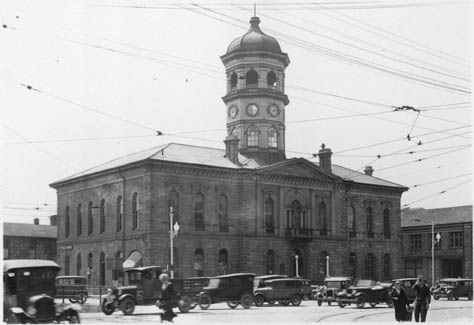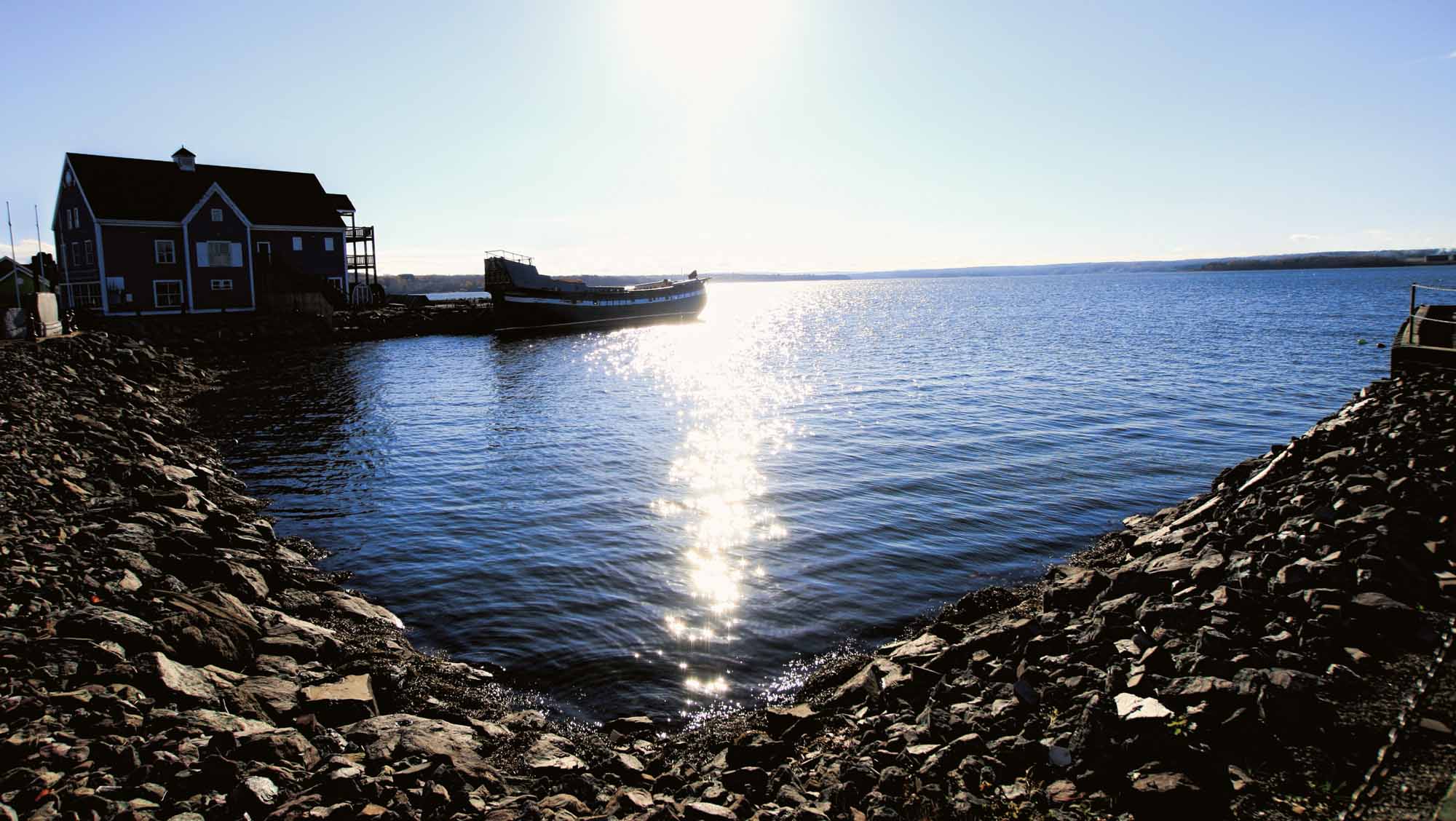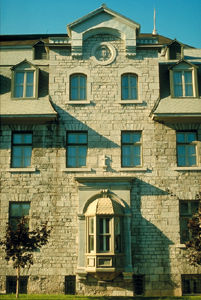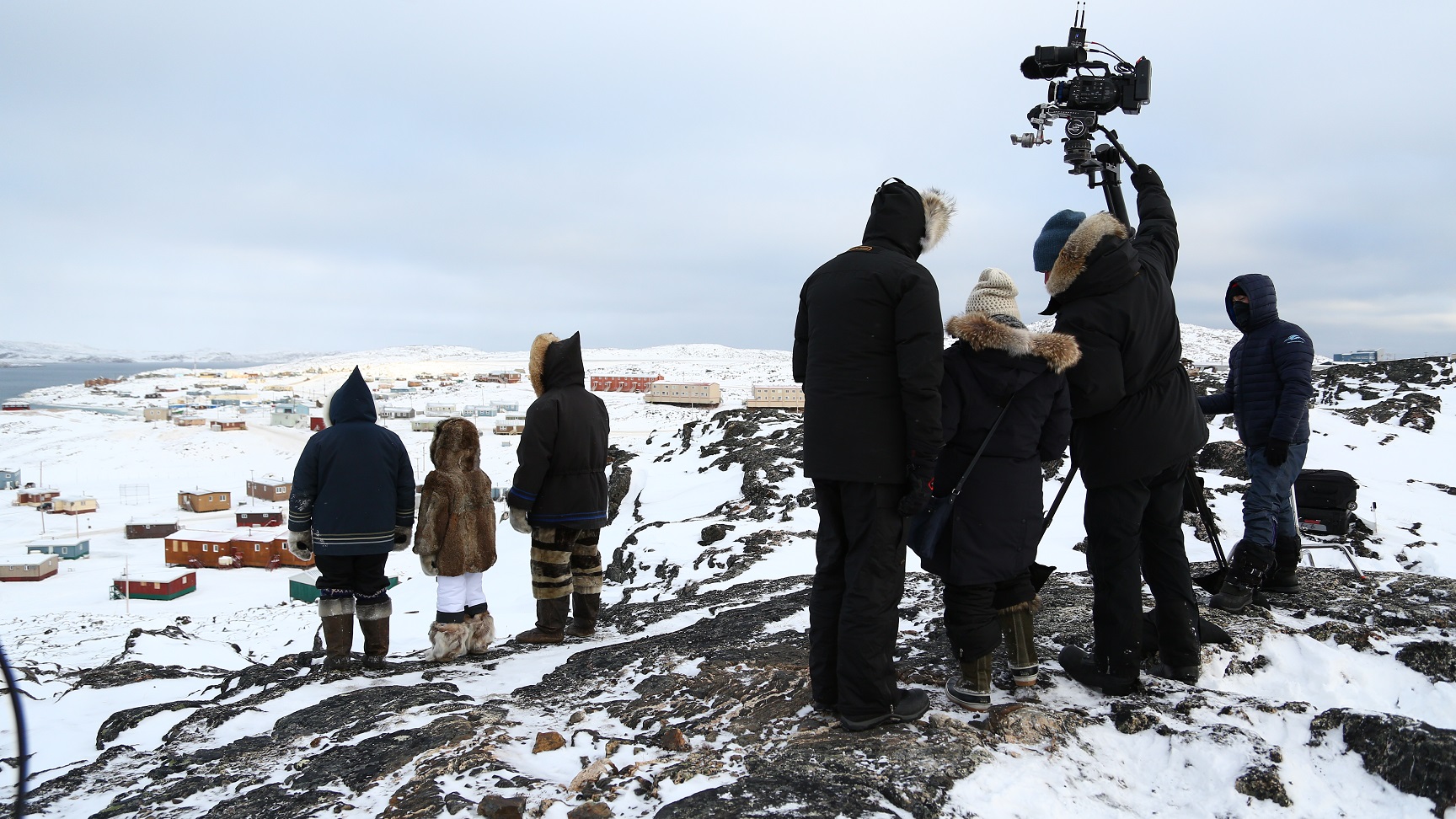Browse "History"
-
Macleans
Griffintown Remembered
This article was originally published in Maclean’s magazine on March 17, 2003. Partner content is not updated. HAPPY FURLONG'S LIFE was saved by a quart of beer. When the elderly carriage driver left his rooming house at the corner of Shannon and Ottawa streets in MONTREAL's Griffintown shortly after 10 a.m.
"https://development.thecanadianencyclopedia.ca/images/tce_placeholder.jpg?v=e9dca980c9bdb3aa11e832e7ea94f5d9" // resources/views/front/categories/view.blade.php
https://development.thecanadianencyclopedia.ca/images/tce_placeholder.jpg?v=e9dca980c9bdb3aa11e832e7ea94f5d9
-
"https://d2ttikhf7xbzbs.cloudfront.net/media/media/719a5a9d-e031-496a-a4d4-2555d667b686.jpg" // resources/views/front/categories/view.blade.php
https://d2ttikhf7xbzbs.cloudfront.net/media/media/719a5a9d-e031-496a-a4d4-2555d667b686.jpg
-
Article
Group of Seven
The Group of Seven, also known as the Algonquin School, was a school of landscape painters. It was founded in 1920 as an organization of self-proclaimed modern artists and disbanded in 1933. The group presented the dense, northern boreal forest of the Canadian Shield as a transcendent, spiritual force. Their depictions of Canada’s rugged wind-swept forest panoramas were eventually equated with a romanticized notion of Canadian strength and independence. Their works were noted for their bright colours, tactile paint handling, and simple yet dynamic forms. In addition to Tom Thomson, David Milne and Emily Carr, the Group of Seven were the most important Canadian artists of the early 20th century. Their influence is seen in artists as diverse as abstract painter Jack Bush, the Painters Eleven, and Scottish painter Peter Doig.
"https://d2ttikhf7xbzbs.cloudfront.net/media/media/8b176fb1-c3cb-418c-a75f-a4c425f928d0.jpg" // resources/views/front/categories/view.blade.php
https://d2ttikhf7xbzbs.cloudfront.net/media/media/8b176fb1-c3cb-418c-a75f-a4c425f928d0.jpg
-
Article
Guelph in the First World War
Guelph, Ontario, was typical of small Canadian cities during the First World War. Of its population of about 16,000, more than a third, 5,610, volunteered for military service; 3,328 were accepted. Today, 216 of their names are engraved on the city’s cenotaph. While Guelphites served overseas, the war had a profound and lasting effect on their hometown — an experience that provides an insight into wartime Canada.
"https://d2ttikhf7xbzbs.cloudfront.net/media/media/e38f8065-b481-40c7-9d21-690d7e0a84dc.jpg" // resources/views/front/categories/view.blade.php
https://d2ttikhf7xbzbs.cloudfront.net/media/media/e38f8065-b481-40c7-9d21-690d7e0a84dc.jpg
-
Macleans
Gustafsen Lake Standoff: 15 Charged
The trial took 10 months, its drama unfolding daily behind floor-to-ceiling bulletproof glass in the highest-security courtroom in British Columbia. Spectators passed through a metal detector before entering the B.C. Supreme Court in Surrey, a southeast suburb of Vancouver.This article was originally published in Maclean's Magazine on June 2, 1997
"https://development.thecanadianencyclopedia.ca/images/tce_placeholder.jpg?v=e9dca980c9bdb3aa11e832e7ea94f5d9" // resources/views/front/categories/view.blade.php
https://development.thecanadianencyclopedia.ca/images/tce_placeholder.jpg?v=e9dca980c9bdb3aa11e832e7ea94f5d9
-
Article
Haldimand Proclamation
On 25 October 1784, Sir Frederick Haldimand, the governor of the province Quebec, signed a decree that granted a tract of land to the Haudenosaunee (Iroquois), also known as the Six Nations, in compensation for their alliance with British forces during the American Revolution (1775–83). This tract of land, known as the Haldimand Grant or Haldimand Tract, extended for 10 km on both sides of the Grand River (southwestern Ontario), from its source to Lake Erie. Throughout the late 1700s and 1800s, the Crown and Haudenosaunee disputed rights to the land title. Negotiations about title to the Haldimand Tract still continue between the Canadian government and the Six Nations Confederacy.
"https://d2ttikhf7xbzbs.cloudfront.net/media/media/4e9bdb40-6a17-4aed-8166-559a7b871ae7.jpg" // resources/views/front/categories/view.blade.php
https://d2ttikhf7xbzbs.cloudfront.net/media/media/4e9bdb40-6a17-4aed-8166-559a7b871ae7.jpg
-
Article
Halibut Treaty
The Halibut Treaty of 1923 (formally the Convention for the Preservation of Halibut Fishery of the Northern Pacific Ocean) was an agreement between Canada and the United States on fishing rights in the Pacific Ocean. It was the first environmental treaty aimed at conserving an ocean fish stock. It was also the first treaty independently negotiated and signed by the Canadian government; one of several landmark events that transitioned Canada into an autonomous sovereign state. It also indicated a shift in Canada’s economic focus from Britain to the US during the 1920s, when the US passed Britain as Canada’s largest trading partner. The treaty created the International Pacific Halibut Commission, which continues in its role today.
"https://d2ttikhf7xbzbs.cloudfront.net/media/new_article_images/HalibutTreaty/Pacific_halibut_range_2.png" // resources/views/front/categories/view.blade.php
https://d2ttikhf7xbzbs.cloudfront.net/media/new_article_images/HalibutTreaty/Pacific_halibut_range_2.png
-
Article
Halifax Relief Commission
Halifax Relief Commission began 6 Dec 1917 as an emergency committee to provide immediate relief after the HALIFAX EXPLOSION. In Apr 1918, a 3-man commission was incorporated by provincial statute to administer a $30-million fund for medical care, social welfare, compensation and reconstruction.
"https://development.thecanadianencyclopedia.ca/images/tce_placeholder.jpg?v=e9dca980c9bdb3aa11e832e7ea94f5d9" // resources/views/front/categories/view.blade.php
https://development.thecanadianencyclopedia.ca/images/tce_placeholder.jpg?v=e9dca980c9bdb3aa11e832e7ea94f5d9
-
Article
Hawker Hurricane
The Hawker Hurricane was a combat aircraft of the 1930s and 1940s, designed by the British aircraft manufacturer Hawker Aircraft Ltd. The Hurricane was one of the principal combat aircraft that defended the United Kingdom during the Battle of Britain. This fighter plane played a pivotal role in the Second World War, primarily serving with the Royal Air Force, Royal Navy, Royal Canadian Air Force and Soviet Air Force. The Hurricane was mass-produced, with over 14,000 examples manufactured from 1937 to 1944. The Hurricane was produced in the United Kingdom and in Canada, with 1,451 examples built at the Canadian Car & Foundry plant, which was located in Fort William (now Thunder Bay), Ontario. Hurricane production in Canada lasted from 1938 to 1943 and was overseen by Elsie MacGill, the first woman in Canada to earn a master’s degree in aeronautical engineering. MacGill was popularly known as the “Queen of the Hurricanes” for overseeing the rapid production of the aircraft. At the height of production, the Canadian Car & Foundry plant produced 15 new aircraft each week.
"https://d2ttikhf7xbzbs.cloudfront.net/HawkerHurricane/Hurricane_a063534-v8.jpg" // resources/views/front/categories/view.blade.php
https://d2ttikhf7xbzbs.cloudfront.net/HawkerHurricane/Hurricane_a063534-v8.jpg
-
Article
HBC Trading Posts in Canada
From 1670 until 1987, the Hudson’s Bay Company (HBC) operated hundreds of trading posts in various parts of Canada and the northwestern US. During the fur trade, Indigenous trappers visited trading posts to exchange furs for valued goods produced by Europeans, including metal objects, weapons and glass beads. In 1870, the HBC’s vast territory of northern wilderness (see Rupert’s Land and North-Western Territories) was transferred to the Canadian government, and the HBC gradually transitioned from a fur trading company to a retail establishment. The HBC maintained posts in Northern Canada, however, until 1987. Some settlements that remained in and around the old trading posts developed into cities, such as Winnipeg (Fort Garry), Edmonton (Fort Edmonton) and Victoria (Fort Victoria). Some First Nations that had established themselves near HBC posts also have names that reflect their fur trading history, including Fort Albany First Nation in Ontario and Fort McKay First Nation in Alberta.
"https://d2ttikhf7xbzbs.cloudfront.net/Kugluktuk-Trading-Post.jpg" // resources/views/front/categories/view.blade.php
https://d2ttikhf7xbzbs.cloudfront.net/Kugluktuk-Trading-Post.jpg
-
Article
Hector
Hector, the ship which carried 178 Scottish immigrants to the Pictou area of northern Nova Scotia in 1773. Pictou was located on the "Philadelphia Plantation," an 81 000 ha tract granted to 14 Scots proprietors and settled desultorily since 1767.
"https://d2ttikhf7xbzbs.cloudfront.net/media/media/a0a529f1-d15d-4956-b0be-6b66feaa1bd1.jpg" // resources/views/front/categories/view.blade.php
https://d2ttikhf7xbzbs.cloudfront.net/media/media/a0a529f1-d15d-4956-b0be-6b66feaa1bd1.jpg
-
Article
Heritage Canada Foundation
The Heritage Canada Foundationwas established in 1973 under Executive Director R.A.J. Phillips and chairman Hartland M.
"https://development.thecanadianencyclopedia.ca/images/tce_placeholder.jpg?v=e9dca980c9bdb3aa11e832e7ea94f5d9" // resources/views/front/categories/view.blade.php
https://development.thecanadianencyclopedia.ca/images/tce_placeholder.jpg?v=e9dca980c9bdb3aa11e832e7ea94f5d9
-
Article
Heritage Conservation
Heritage conservation has assumed a place in contemporary Canadian society because it addresses certain desires, notably for tangible connections to our historical roots and a "sense of place" for those who despair the "anyplace" character of many communities.
"https://d2ttikhf7xbzbs.cloudfront.net/media/media/1ba0fe33-33a6-47ce-af79-eec3df963b06.jpg" // resources/views/front/categories/view.blade.php
https://d2ttikhf7xbzbs.cloudfront.net/media/media/1ba0fe33-33a6-47ce-af79-eec3df963b06.jpg
-
Article
Heritage Minutes
The Heritage Minutes collection is a bilingual series of history-focused public service announcements. Each 60-second short film depicts a significant person, event or story in Canadian history. They are produced by Historica Canada, the not-for-profit organization that also publishes this encyclopedia. First released in 1991, the Heritage Minutes have been shown on television, in cinemas and online. They have become a recognizable part of Canadian culture. The collection currently includes 102 episodes.
"https://d2ttikhf7xbzbs.cloudfront.net/media/media/ef617765-aea7-4495-8c0c-0be405231d56.jpg" // resources/views/front/categories/view.blade.php
https://d2ttikhf7xbzbs.cloudfront.net/media/media/ef617765-aea7-4495-8c0c-0be405231d56.jpg
-
Collection
Heritage Minutes
The Heritage Minutes collection is a bilingual series of history-focused public service announcements. Each 60-second short film depicts a significant person, event or story in Canadian history. They are produced by Historica Canada, the not-for-profit organization that also publishes this encyclopedia. First released in 1991, the Heritage Minutes have been shown on television, in cinemas and online. They have become a recognizable part of Canadian culture. The collection currently includes 100 episodes.
"https://d2ttikhf7xbzbs.cloudfront.net/media/media/1bfa3d45-2952-4f79-b7d4-4c6cb6601164.jpg" // resources/views/front/categories/view.blade.php
https://d2ttikhf7xbzbs.cloudfront.net/media/media/1bfa3d45-2952-4f79-b7d4-4c6cb6601164.jpg
